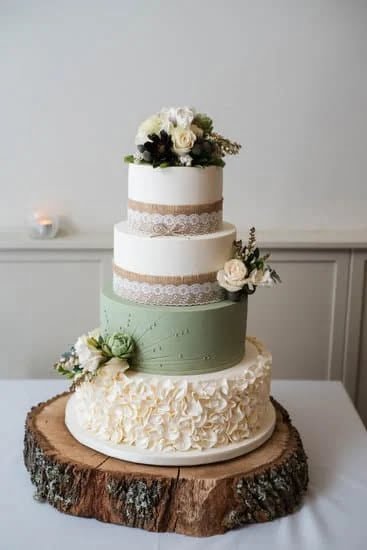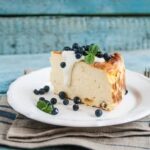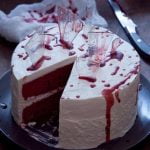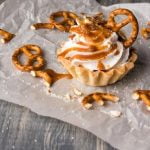Are you a beginner looking to learn how to decorate a cake? Cake decorating is not only a delightful hobby, but it also allows beginners to unleash their creativity and artistic talents.
In this article, we will explore the essential tools, techniques, and tips for beginners who want to master the art of cake decorating. Whether you’re looking to impress your friends and family with beautifully decorated cakes or considering a potential career in baking and pastry arts, this beginner’s guide will provide you with all the necessary information to get started.
Cake decorating may seem intimidating at first, but with the right guidance and practice, it can be an enjoyable and rewarding experience. From choosing the right colors and designs to mastering basic techniques like buttercream frosting and fondant work, we will cover everything you need to know as a beginner decorator.
So if you’re ready to learn how to decorate a cake for beginners and take your baking skills to the next level, let’s dive into the wonderful world of cake decorating together.
In the following sections, we will discuss essential tools and equipment for cake decorating beginners, basic techniques such as piping and crumb coating, as well as tips for choosing the right colors and designs for your creations. We will also explore simple cake decorating designs like rosettes, ruffles, borders, adding textures and patterns, finishing touches with edible decorations, and troubleshooting common mistakes that beginners may encounter.
By the end of this article, you’ll be equipped with the knowledge and confidence to create stunning cakes that showcase your newfound passion for cake decorating.
Essential Tools and Equipment for Cake Decorating Beginners
When starting your journey in cake decorating, having the right tools and equipment is essential to ensure that you can create beautiful and professional-looking cakes. Here are some of the must-have items for beginners:
- Turntable: A revolving cake stand is essential for easy frosting and decorating. It allows you to spin the cake as you work, ensuring smooth and even coverage.
- Piping bags and tips: Invest in a set of piping bags and a variety of tips to create different designs with buttercream or royal icing. A set with multiple sizes and shapes will give you flexibility in your designs.
- Offset spatula: This tool is great for spreading frosting smoothly on the sides and top of the cake. It gives you precise control, making it easier to achieve a professional finish.
- Bench scraper: A bench scraper is useful for smoothing the sides of the cake after applying frosting, creating clean edges.
- Fondant tools: If you plan to work with fondant, invest in a fondant smoother, rolling pin, and shaping tools to help you mold and shape the fondant for your designs.
In addition to these tools, it’s important to have a good quality cake stand or presentation board to display your finished creations. Having a dedicated space with a good light source for decorating is also beneficial.
Now that you have an idea about the basic tools needed, let’s move on to understanding how each one is used and what techniques can be achieved with them when learning how to decorate a cake as beginners.
Basic Cake Decorating Techniques for Beginners
When starting out in the world of cake decorating, it’s important to master the basic techniques that will form the foundation of your skills. Buttercream frosting, fondant, and piping are three essential techniques that every beginner should become familiar with. Here’s a guide on how to decorate a cake for beginners using these fundamental methods:
- Buttercream Frosting: One of the most versatile and forgiving options for beginner cake decorators, buttercream frosting is easy to work with and can be used to create smooth finishes or decorative swirls. To start, make sure your cake is cooled completely before applying the buttercream.
Use an offset spatula to spread an even layer of frosting over the top and sides of the cake, then use a bench scraper to smooth it out for a clean finish. - Fondant: While working with fondant may seem intimidating at first, it can produce stunning results when mastered. Knead the fondant until it’s pliable, then roll it out into a thin sheet using powdered sugar to prevent sticking. Carefully drape the fondant over the cake and smooth out any air bubbles or creases with a fondant smoother. Trim any excess fondant from the bottom of the cake for a neat appearance.
- Piping: Piping allows beginners to add intricate designs and details to their cakes with ease. Start by filling a piping bag with your desired icing color and choose a piping tip that suits your design – round tips are ideal for creating borders and writing, while star tips can be used for rosettes and swirls.
Practice consistent pressure on the bag as you pipe your designs onto the cake until you feel confident in creating clean lines and shapes.
By mastering these basic cake decorating techniques, beginners can gain valuable skills that will serve as building blocks for more advanced designs in the future. With practice and patience, anyone can learn how to decorate a cake beginners enjoy creating beautiful edible works of art.
Step-by-Step Guide on How to Level, Fill, and Crumb Coat a Cake
When it comes to decorating a cake, starting with the basics is key. One of the most important steps in cake decorating is ensuring that your cake is properly prepped before adding any decorations. In this section, we will walk you through the step-by-step process of leveling, filling, and crumb coating a cake.
Leveling Your Cake
Before you can begin decorating your cake, it’s essential to have a level surface to work with. Start by using a long serrated knife to carefully slice off the domed top of your cake layers. This will create a flat and even surface for stacking and decorating your cake.
Filling Your Cake
Once your cake layers are leveled, it’s time to add your filling. Whether you choose fruit preserves, flavored frosting, or ganache, spreading an even layer of filling between each cake layer will add flavor and moisture to your creation.
Crumb Coating Your Cake
After your cake layers are stacked and filled, it’s time to apply a crumb coat. This initial layer of frosting will help seal in any loose crumbs and provide a smooth base for your final layer of frosting or fondant. Use an offset spatula to apply a thin layer of frosting across the top and sides of the cake, then chill the cake in the refrigerator for at least 30 minutes to allow the crumb coat to set.
By mastering these foundational steps in preparing a cake for decoration, beginners can build confidence in their skills before moving on to more advanced techniques. Taking the time to level, fill, and crumb coat a cake properly sets the stage for beautiful and professional-looking designs.
Tips for Choosing the Right Colors and Designs for Cake Decorating Beginners
Choosing the right colors and designs for cake decorating is an essential aspect of creating visually appealing and impressive cakes. For beginners in the art of cake decorating, it can be overwhelming to decide on the perfect color palette and design elements to enhance their creations. However, with some tips and guidance, beginners can easily navigate through this process and create stunning cakes that reflect their creativity and personal style.
When choosing colors for cake decorating, beginners should consider the theme or occasion for which the cake is being made. For example, pastel colors are often used for baby showers or Easter cakes, while vibrant hues are popular for birthday celebrations. It’s important to think about the overall look and feel that you want to achieve with your cake design, as this will guide your color choices.
In addition to considering the theme or occasion, beginners should also take into account color theory when selecting hues for their cake designs. Understanding the basics of color mixing, complementary colors, and color harmonies can help beginners create visually pleasing combinations that enhance their cake decorations. By experimenting with different color palettes and shades, beginners can develop a better sense of how colors work together in cake decorating.
When it comes to choosing designs for cake decorating, beginners should start with simple patterns and motifs that they feel comfortable working with. This may include polka dots, stripes, or simple floral designs.
As beginners gain more experience and confidence in their skills, they can gradually explore more intricate designs such as lace patterns, geometric shapes, or even hand-painted details on their cakes. Ultimately, the key is to start small and build up your design repertoire over time as you progress in your cake decorating journey.
By following these tips and being mindful of theme, color theory, and design complexity, beginners can effectively choose the right colors and designs for their cake decorating projects. With practice and experimentation, aspiring bakers can develop a keen eye for aesthetically pleasing combinations that will elevate their cake creations from amateur to professional level.
Mastering Simple Cake Decorating Designs
When it comes to cake decorating for beginners, mastering simple designs like rosettes, ruffles, and borders can be a great starting point. These basic techniques can add beauty and elegance to your cakes while also building your confidence as a beginner decorator.
Creating Rosettes
Rosettes are a classic and versatile design that can instantly elevate the look of any cake. To create rosettes, you will need a piping bag fitted with a large star tip.
Hold the piping bag perpendicular to the surface of the cake and apply even pressure to create a swirl motion, starting from the center and working your way outwards. Practice on a flat surface before trying it on your cake to ensure you have the right technique and consistent pressure.
Designing Ruffles
Ruffles are another simple yet stunning design that can give your cake an elegant and whimsical touch. To create ruffles, use a small offset spatula or a decorating comb to make small vertical strokes around the sides of the cake. Layer them on top of each other in an overlapping fashion to create a beautiful ruffled effect.
Accentuating With Borders
Borders are the perfect finishing touch for any cake, providing a clean and polished edge. You can create borders using different techniques such as shell borders, bead borders, or rope borders. Use a piping bag with your desired tip to carefully pipe along the edge of your cake in a continuous motion.
As beginners, mastering these simple cake decorating designs takes practice and patience. Don’t be discouraged if your first attempts don’t turn out perfectly – keep practicing and refining your techniques until you feel confident in creating these designs. Experiment with different colors and styles to find what works best for you, and remember that every mistake is an opportunity to learn and improve.
How to Add Textures and Patterns to Your Cake Creations
Adding textures and patterns to your cake creations can take your decorating skills to the next level. Whether you’re just starting out or looking to expand your repertoire, learning how to add texture and patterns will enhance the visual appeal of your cakes.
One way to add texture to your cake is by using different frosting techniques. For example, you can create a textured look by using a spatula or comb to create ridges in the frosting. Another option is to use a piping bag with a specialty tip, such as a basketweave or grass tip, to add depth and dimension to your designs.
In addition to frosting techniques, you can also incorporate patterns into your cake decorating. This can be achieved through the use of stencils, edible paint, or even edible images printed onto frosting sheets. These methods allow you to create intricate designs and personalize your cakes according to the occasion or theme.
Experimenting with different textures and patterns is a great way for beginners to build confidence and develop their own unique style in cake decorating. Remember, practice makes perfect, so don’t be afraid to try new techniques and get creative with your designs. With time and dedication, you’ll be amazed at how quickly you can elevate your cake creations from simple desserts to works of art.
Finishing Touches
Adding the finishing touches to your cake creations with edible decorations and garnishes is a key step in taking your cake decorating skills to the next level. Whether you’re looking to add a pop of color, texture, or dimension to your cakes, choosing the right edible decorations and garnishes can help elevate the overall design and appeal of your baked masterpiece.
One of the simplest ways to add an elegant touch to your cake is by using fresh fruit as both a decorative element and a tasty addition. Berries, citrus slices, and even edible flowers can be strategically placed on top of or around the cake to create a visually stunning display. Not only do these additions enhance the overall aesthetic of the cake, but they also provide a burst of freshness and flavor that complements the sweetness of the dessert.
Another popular option for adding decorative flair to cakes is by incorporating edible gold or silver leaf. These delicate, metallic accents can instantly give your cake a touch of luxury and sophistication. Edible glitter, shimmer dust, or edible pearls are also great options for adding a bit of sparkle and glamour to your designs.
In addition to these options, consider using chocolate curls, shavings, or even intricate piping work with royal icing to create intricate floral designs or other decorative elements that will impress any guest at your next celebration. Experimenting with different textures and patterns through these edible decorations will allow you to express your creativity while enhancing the overall look of your cakes.
| Edible Decorations | Garnishes |
|---|---|
| Fresh fruit (berries, citrus slices) | Edible gold or silver leaf |
| Chocolate curls/shavings | Edible glitter/shimmer dust |
| Edible flowers | Edible pearls |
Troubleshooting Common Cake Decorating Mistakes for Beginners
Cake decorating can be a rewarding and enjoyable hobby, but like any new skill, there can be some challenges along the way. As beginners start to experiment with different cake decorating techniques, they may encounter common mistakes such as cracks in fondant, smudges in buttercream frosting, or uneven frosting application. However, these mistakes are all part of the learning process and with some guidance and practice, beginners can overcome these issues.
One common issue for beginners is dealing with cracks in fondant. This can happen when the fondant is rolled too thin or if it becomes dry and starts to tear. To avoid this, ensure that the fondant is rolled out evenly and at an appropriate thickness. Additionally, working quickly and carefully when applying the fondant to the cake can help prevent cracking.
Another challenge that beginners often face is achieving smooth and even frosting on their cakes. Uneven frosting can result in a lumpy or messy appearance which can detract from the overall design. To achieve a smooth finish, it’s important to start with a crumb coat to seal in any loose crumbs before applying the final layer of frosting. Using a bench scraper or offset spatula can also help to achieve a clean and even finish.
In addition to these challenges, beginners may also encounter smudges or imperfections in their buttercream frosting. This can happen if the temperature of the buttercream is too warm or if it has been overmixed. It’s important to keep the buttercream at a cool but spreadable consistency and to mix it gently to avoid creating air bubbles. With practice and attention to detail, beginners can improve their technique and create beautifully decorated cakes.
| Cake Decorating Challenges | Tips for Overcoming Challenges |
|---|---|
| Cracks in Fondant | Roll out fondant evenly and at an appropriate thickness; work quickly and carefully when applying fondant |
| Uneven Frosting | Start with a crumb coat before applying final layer of frosting; use tools like a bench scraper or offset spatula for smooth finish |
| Smudges in Buttercream Frosting | Maintain buttercream at a cool but spreadable consistency; mix gently to avoid air bubbles |
Conclusion
In conclusion, cake decorating is truly a fun and creative hobby that offers endless possibilities for beginners. With the right tools, techniques, and guidance, anyone can create beautiful and delicious works of art. As you continue to practice and explore your creativity in cake decorating, remember to be patient with yourself and allow room for mistakes. It’s all part of the learning process.
As mentioned in this article, mastering basic techniques such as buttercream frosting, fondant work, and piping will provide a solid foundation for your cake decorating journey. Additionally, learning how to level, fill, crumb coat a cake will ensure that your creations not only look beautiful but taste great too. Remember to also pay attention to choosing the right colors and designs to elevate your cake decorating skills.
Lastly, don’t be afraid to experiment with different textures, patterns, and edible decorations. Let your imagination run wild as you create stunning rosettes, ruffles, borders, and unique designs on your cakes. And always keep in mind that practice makes perfect – so keep at it. With dedication and passion for the craft of cake decorating beginners will soon become experts on creating beautiful cakes that everyone will love.
Frequently Asked Questions
What Does a Beginner Need for Cake Decorating?
A beginner in cake decorating will need basic tools like a turntable, offset spatula, piping bags, and tips, as well as a good recipe for buttercream or fondant. It’s also helpful to have some practice with piping techniques.
How to Decorate Cake at Home Easy?
Decorating a cake at home can be easy with the right tools and some simple techniques. Start by leveling and frosting the cake with a crumb coat, then add the final layer of frosting. Use different piping tips for decorative touches and consider adding edible decorations like flowers or sprinkles.
Can I Teach Myself to Decorate Cakes?
Yes, it is possible to teach yourself how to decorate cakes. There are plenty of online tutorials, books, and resources available for learning different techniques and styles of cake decorating. With practice and patience, anyone can improve their skills in this craft.

Welcome to our cake decorating blog! My name is Destiny Flores, and I am the proud owner of a cake decorating business named Cake Karma. Our mission is to provide delicious, beautiful cakes for all occasions. We specialize in creating custom cakes that are tailored specifically to each customer’s individual needs and tastes.





